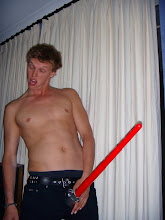Kiruna is the northernmost city in Sweden, situated in Lapland province, with 18,154 inhabitants in 2005. Archeological findings have shown that the region around Kiruna has been inhabited for at least 6,000 years. Centuries before Kiruna was founded in 1900, the presence of iron ore at Kiirunavaara and Luossavaara had been known by the local Sami population. In 1696,Samuel Mört, a bookkeeper of the Kengis works, wrote on the presence of iron in the two hills. Anders Hacksell mapped the area in 1736 and named the mountains Fredriks berg (Kiirunavaara) and Berget Ulrika Eleonora (Luossavaara), after king Fredrik I and his wife Ulrika Eleonora. Despite the findings of large amounts of ore, no mining was initiated because of the remote location and the harsh climate. Some ore was extracted in the 19th century by extracting it in summer and transporting it in winter, using sleds drawn by reindeer and horses.
Today Iron ore extraction is a key industry in the area, and the town is very dependent on the mining company LKAB. During World War II, large quantities of iron were transported from northern Sweden by rail to the east coast, and further down to be sold to Germany.
"nothing is original. steal from anywhere that resonates with inspiration or fuels your imagination. devour old films, new films, music, books, paintings, photographs, poems, random conversations, architecture, bridges, street signs, trees, clouds, bodies of water, light and shadows, select only things to steal from that speak directly to your soul".................................stolen from - jim jarmusch
